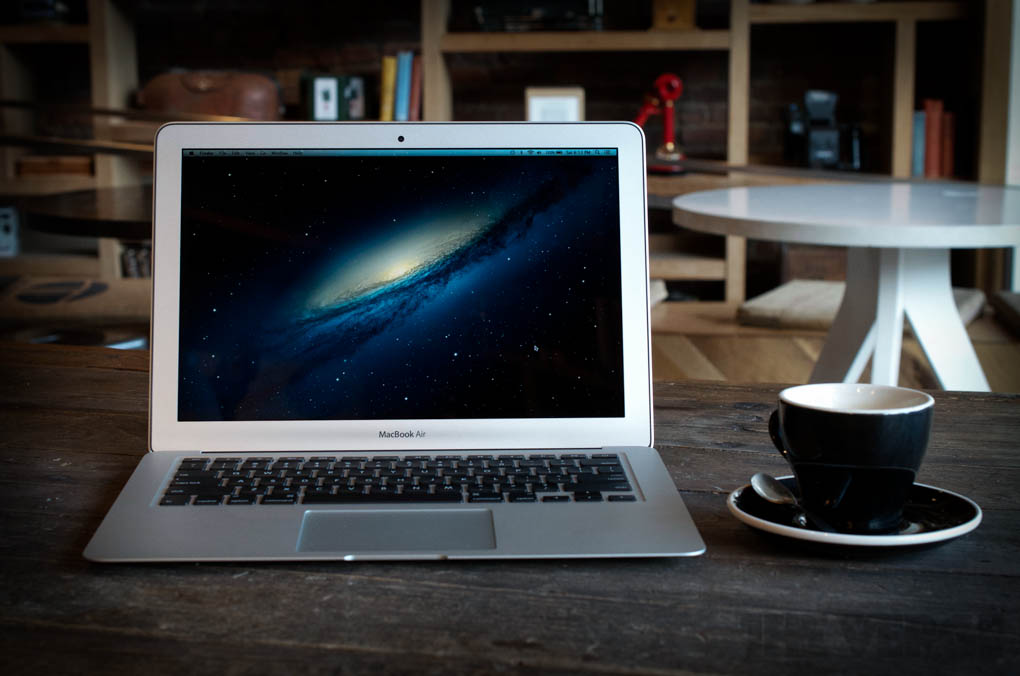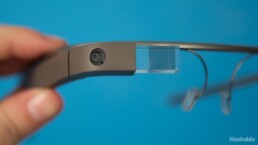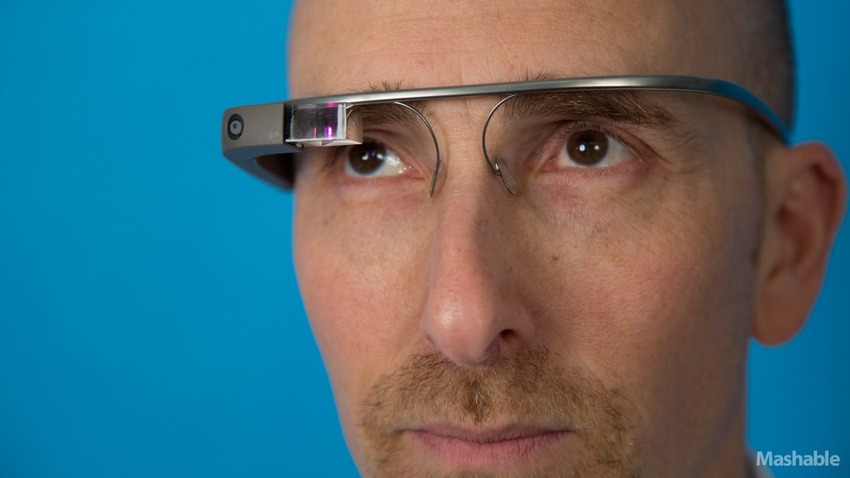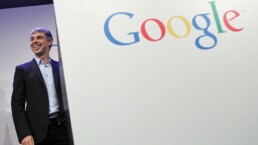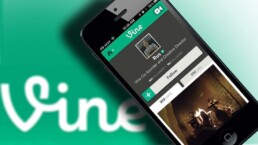Bonjour tout le monde !
Bienvenue dans WordPress. Ceci est votre premier article. Modifiez-le ou supprimez-le, puis lancez-vous !
MacBook Air 2013
Toby’s Estate Coffee in Brooklyn should be my favorite local coffee shop. The Australian company’s first US location is big and bright, with ample seating, great service, and terrific coffee — the ultra-expensive Strada variable-pressure espresso machine behind the bar sees to that. It’s also full of attractive young people hellbent on challenging traditional notions of fashion, beauty, and exactly what constitutes a pair of pants. The entire experience is delightful.
There’s only one problem: there are exactly zero power outlets in the joint.
The lack of power is rumored to be deliberate; a gentle way to keep patrons from lingering all day over laptops while sipping $2.75 Americanos. Sure, you’ll see the occasional laptop owner try and settle in for a few hours, but panic sets in fast — eventually fear drives everyone to make a move, freeing up seats for the next wave of creative-class nomads to try and beat the clock while sucking down fresh cups of joe.
But Apple’s new 13-inch MacBook Air might change Toby’s for good — it’s almost exactly the same externally as last year’s model, but a revised chipset inside offers a claimed 12-hour battery life with improved graphics performance and even faster Wi-Fi speeds if you have a compatible router. In short, Apple’s just taken the best overall laptop on the market and turned it into a declaration of war against coffee shops everywhere.
All day
13 hours and 29 minutes. That’s all you really need to know — that’s how long the new MacBook Air running Safari lasted running The Verge Battery Test, which cycles through a series of websites and images at 65 percent brightness. Run time in Chrome was shorter, at 11 hours and 29 minutes, but both are still ridiculously impressive. In fact, it’s the record for a laptop running our test without an external battery.
13 hours and 29 minutes. That's really all you need to know.
This insane battery life is enabled by Intel’s new Haswell chips, which will spring up on laptops across the industry in the coming weeks. Apple’s actually managed to outperform Intel’s standard Haswell battery life claims with the new Air; we’ll have to see how Windows machines with the new chips compare.
While Haswell offers dramatic battery life improvements, performance is slightly different story. The base model $1,099 Air I tested has a 1.3GHz Core i5 processor, clocked lower than the previous model’s 1.8GHz chip. Apple says the more efficient Haswell chip should perform about the same, but the benchmarks indicate that it’s the tiniest bit slower — 6,057 in Geekbench vs. 6,197 for the older version. I didn’t notice any difference in real world usage, and I’m happy to take the extremely slight performance hit for more than double the battery life. I suspect most consumers buying a base model laptop will feel the same way. (I do think the 128GB of storage in the base model is a little skimpy — you can get 256GB for $200 more, which feels a little expensive but is probably worth it.)
A slight performance hit for more than double the battery life
Apple does say the new Air should have 40 percent faster graphics, and while you still won’t want to rely on the integrated Intel graphics card for any high-end photo or video work, it’s certainly passable. I played Portal 2 and Half-Life 2: Episode 2 without any issues at native resolution. But the Air has never been a gaming laptop, and you shouldn’t look to the new model to change that.
If you have a brand-new router with 802.11ac support, you’ll find the the Air supports even faster Wi-Fi networking than before — up to three times faster, in fact. Apple is selling two such routers now, the $199 Airport Extreme and the $299 Time Capsule; I didn’t have any units to test with. But expect all new routers to support the standard; the Air will be ready as the world upgrades.
Olympic Pool
Artist Jennifer Wen Ma and lighting designer Zheng Jianwei have transformed Beijing’s Water Cube into an interactive lighting display that runs from dusk to 10 p.m. daily. The installation visualizes the emotions of Chinese social media service Sina Weibo’s millions of users with its ever-changing color.
Nature and Man in Rhapsody of Light at the Water Cube uses a custom software application that sifts through millions of emoticons and smileys posted to the site and translates them into a glowing light show.
Ma explains, "I have conceived this as a piece that can breathe, as an organic being that changes as nature and society around it changes. I want people to feel like they have some authorship because their emotions are being registered."
Google Glass: Operating Room
The history books are quickly filling up with Google Glass firsts — everything from skydives,showers and, now, surgeries.
You read that right — Dr. Rafael Grossman, also a TEDx speaker and Google Glass Explorer, has used the wearable device to live-stream a surgery. The operation involved endoscopically inserting a feeding tube for a patient and, though he captured footage of the procedure, Grossman said he kept the patient's confidentiality intact.
In a post on his website entitled "OK Glass: Hand Me the Scalpel, Please," Grossman wrote:
“Not only I obtained informed consent about what we were going to attempt (and documented it), but most importantly, made sure that no recording or transmission of any identifying information was done.”
Recorded from Grossman's point of view, the surgical footage (now demarcated as "private" on YouTube) was transmitted to a Google hangout. Grossman said that his goal with the procedure was to show how the device and its platform could be used as intuitive, inexpensive tools to aid in surgical maneuvering and mentoring.
His conclusion? "Google Glass streaming during live surgery by a Glass Explorer surgeon is possible."
Google Glass cost $1,500 when the developer version was released earlier this year; the consumer version is expected to cost less. Watch the video above to learn more, and let us know what you think about the latest Glass endeavor in the comments below.
BONUS: A Look at Google Glass
Is It the Dawn of the Encryption App?
We might live in an age of persistent and pervasive surveillance. The recent revelations about the secret National Security Agency programs aimed at collecting vast amounts of data on Americans and foreigners seemingly confirm what tinfoil-wearing netizens have feared for years: They're watching us; technology has turned against its users.
Amidst prying eyes, a small but growing group of hackers and programmers is working on applications that use cryptography — the science of creating techniques to hide data and render it readable only to intended recipients — to fight surveillance and give regular citizens access to what was once only reserved to computer experts.
It's a battle of geek-made encryption apps against their uniformed snooping foes.
And the spying agencies of the world are getting more adversaries every day. In fact, there are so many apps it's almost impossible to list them all: Silent Circle, Cryptocat, Redphone,Text Secure, Wickr (which Mashable has previously reported on), Ostel, Gibberbot. The list goes on and on.
"These encryption apps could well be the first wave in an entirely new revolution — one that makes truly private communication a reality," writes Matthew Green, a cryptography researcher and professors at Johns Hopkins University Information Security Institute.
Both new and old faces are riding this new wave of crytpo.
One of the apps that has gathered more attention, Silent Circle, has a familiar face at the helm: longtime cryptographer Phillip Zimmermann, who created the popular email and data encryption software Pretty Good Privacy — better known as PGP — in the early 1990s.
Zimmermann and some of his closest collaborators from the PGP years launched Silent Circle last year. It's not just an app; it's a subscription service that comprises a suite of programs that replaces one's regular apps to make calls, send texts, emails and even do videoconferencing, for $10 a month. The apps use end-to-end encryption to ensure that the communication between two Silent Circle users is secure and impossible to read, except by their intended recipients.
The service biggest strength is that it's supposed to be easy to use, and since day one, its creators have had in mind the lessons of the past. While PGP is the gold standard to encrypt data, even after 20 years, it's still very hard to use for regular computer users. Now the idea is to make privacy-enhancing tools easy for everybody to use.
"Not everyone is a crypto geek, and so there is a need to curate the experience," says Zimmermann.
"Not everyone is a crypto geek, and so there is a need to curate the experience," says Zimmermann. "You know howSteve Jobs talks about curated computing? Well, this is curated crypto."
Vinnie Moscaritolo, Silent Circle's "distinguished member of technical staff," echoes the same concept, saying that they "intentionally make [Silent Circle] look like regular apps you use." Because the idea is that "you just sit down and you use it."
Its other big strength is that the keys, used to encrypt and decrypt the communications, aren't managed by Silent Circle itself. So technically, not even the company can know what two users are telling or writing each other. Silent Circle uses the so-called Public Key cryptography, a scheme that allows two people to swap keys and communicate securely, preventing a snooper from interceptinging their communications. (To know more about how this works, watch the below video.)
Happy 5th Birthday, Evernote!
"We’re excited (and a bit scared) about abandoning the relative shelter of the private beta for the open waters ahead," Evernote CEO Phil Libin wrote on the company's blog on June 24, 2008. "But if we’re really going to expand everyone’s memory, we’ve got to let everyone in."
As it turns out, Libin and the Evernote team didn't have too much to be "scared" about. The note-taking app hit 1 million registered users less than a year later and topped 10 million users almost exactly three years after its public launch.
SEE ALSO: 6 Creative Ways to Use Evernote
Now, five years after its launch, Evernote has more than 65 million users worldwide and more than 300 employees. The startup has raised $250 million in funding to date and is widely expected to go public within the next few years.
Evernote released a video to commemorate its five-year anniversary, which you can watch above, as well as a special landing page encouraging users to share their Evernote accomplishments. Evernote is also emailing the first million people who signed up for the service to thank them and tell them which number user they were.
Image courtesy of YouTube, EvernoteVideos
Is Google Building a Games Console?
The Sony PlayStation 4, Micrsoft Xbox One and Nintendo Wii U can look forward to yet more competition soon, if a new report is to be believed. Google is building a videogame console based on the Android OS, according to the Wall Street Journal, which cites "sources familiar with the matter." Google would neither confirm nor deny the report.
The rumor comes in the same week as the release of the Ouya, a $99 Kickstarter-backed console and controller combo that runs a version of Android and fits into the palm of your hand. It is not, however, quite plug and play.
SEE ALSO Ouya: Fun For Hackers, Not Ready for Retail
If Google were to develop its own console, it could count on a lot of useful feedback from Ouya's passionate user base. It would also have a library of Android games ready to go on day one: there are more than 100,000 games in the Google Play store.
By contrast, the PlayStation 3 currently has around 800 games available. And although admittedly they are nearly all higher production values and far more expensive than the average Android title, Google could be betting there's a market for a wider variety of casual games you can just pick up and play on your TV.
According to the Journal's sources, Google is also working on a digital watch that runs Android, as well as a successor to that much maligned and much delayed orb-like media player, the Nexus Q.
Apple is also rumored to be working on a games console. So that marketplace may soon get very crowded indeed.
Image: Justin Sullivan, Getty News
Humans Are Awesome
In his video "Humans Are Awesome," YouTube user Gerry B. put together his favorite GoPro action shots in a dazzling tribute, showing the lengths to which people will go to have fun and live life to its fullest.
Not only does Gerry's video show what those tiny, go-anywhere GoPro video cameras can do, but it's a kickass showcase of this editor's tremendous aesthetic sense. Notice his tasteful use of slow- and fast-motion, his cuts in just the right places, and the expert way he synchronizes the video to that triumphant music ("Time" by Luckner, featuring Sophie Louise).
SEE ALSO: 10 Best iPhone Armbands
Editing video this well is not as easy as it looks. Bask in the power of a masterful video edit that adds further juice to an already exciting group of shots.
This is just one of the videos on Gerry's Humans are Awesome website, showing off not only the guy's editing chops, but some of the cleanest and most interesting video being shot today. Worth a look.
BONUS: 10 Crazy Ways to Use a GoPro
Vine Adds Verified Badges
It’s not exactly easy to tell if someone is who they say they are on Vine, Twitter’s new video-sharing app. Case in point: There’s an account with the username Vine. Who is it? Hard to tell — maybe it’s run by the company; maybe it’s an unknown, opportunistic individual.
Duplicate usernames and easily faked profiles mean it’s difficult to ascertain the legitimacy of high-profile Viners (if that’s what we’re calling them). For now, our best way to tell who’s who on Vine is if verified Twitter accounts plug their six-second videos, or if they pop up when you look for people to follow via connected Twitter accounts
This is the new Vimeo.
We’re in the process of transitioning all our members and visitors to the brand new Vimeo. You’re on it right now!
We made zillions of improvements that cover the front end, the back end, and the parts in between to create a Vimeo that is bigger, faster, and more fun. Scroll down to see what’s new.
Brand New Video Page
The new Vimeo brings even more focus to your videos with a video page that is more cinematic, with a larger, full-width video player and fewer distractions. Your eyeballs are going to adore it. We've also reorganized commonly used tools and creatednew keyboard shortcuts so you can navigate to the next video, “like” a video, or go full-screen without lifting a finger (off your keyboard, anyway).
Better Browsing
Our video browser (the cool kids here call it the “brozar”) now sits on top of the video page and stays hidden until you need it. To access it, click the “More Videos” flag in the upper right corner of any video page, or use the keyboard shortcut “M.” The video browser also provides more ways to discover things you like. Jump to your feed (see below), recently watched videos, watch later list, and more, all from one convenient spot.


